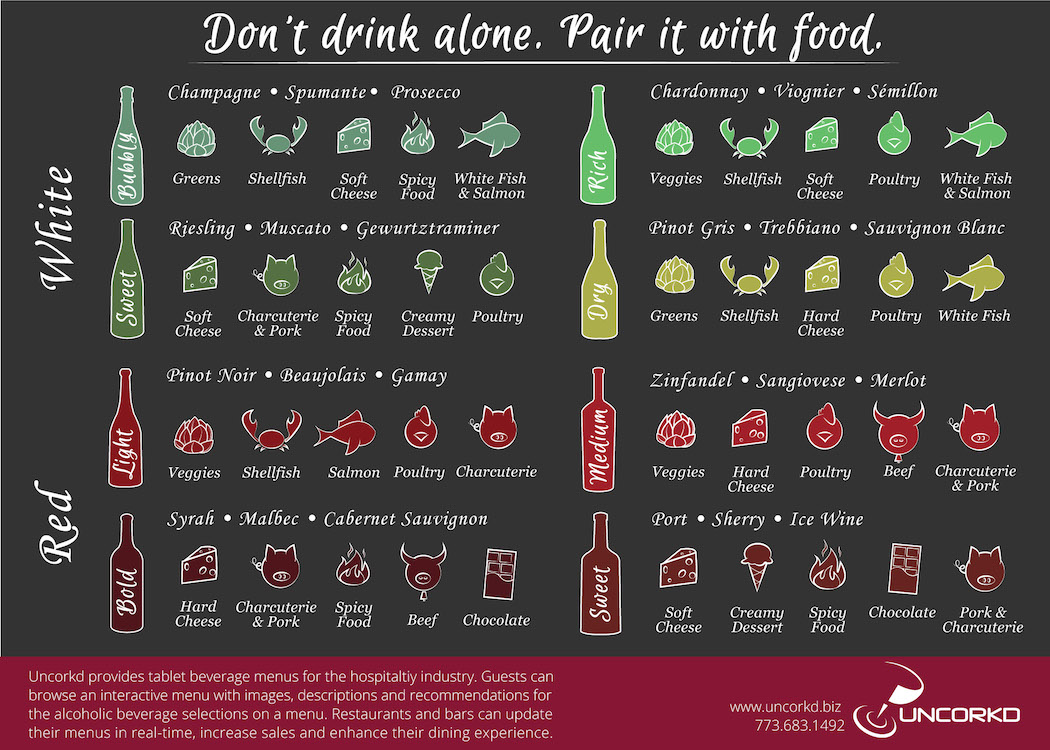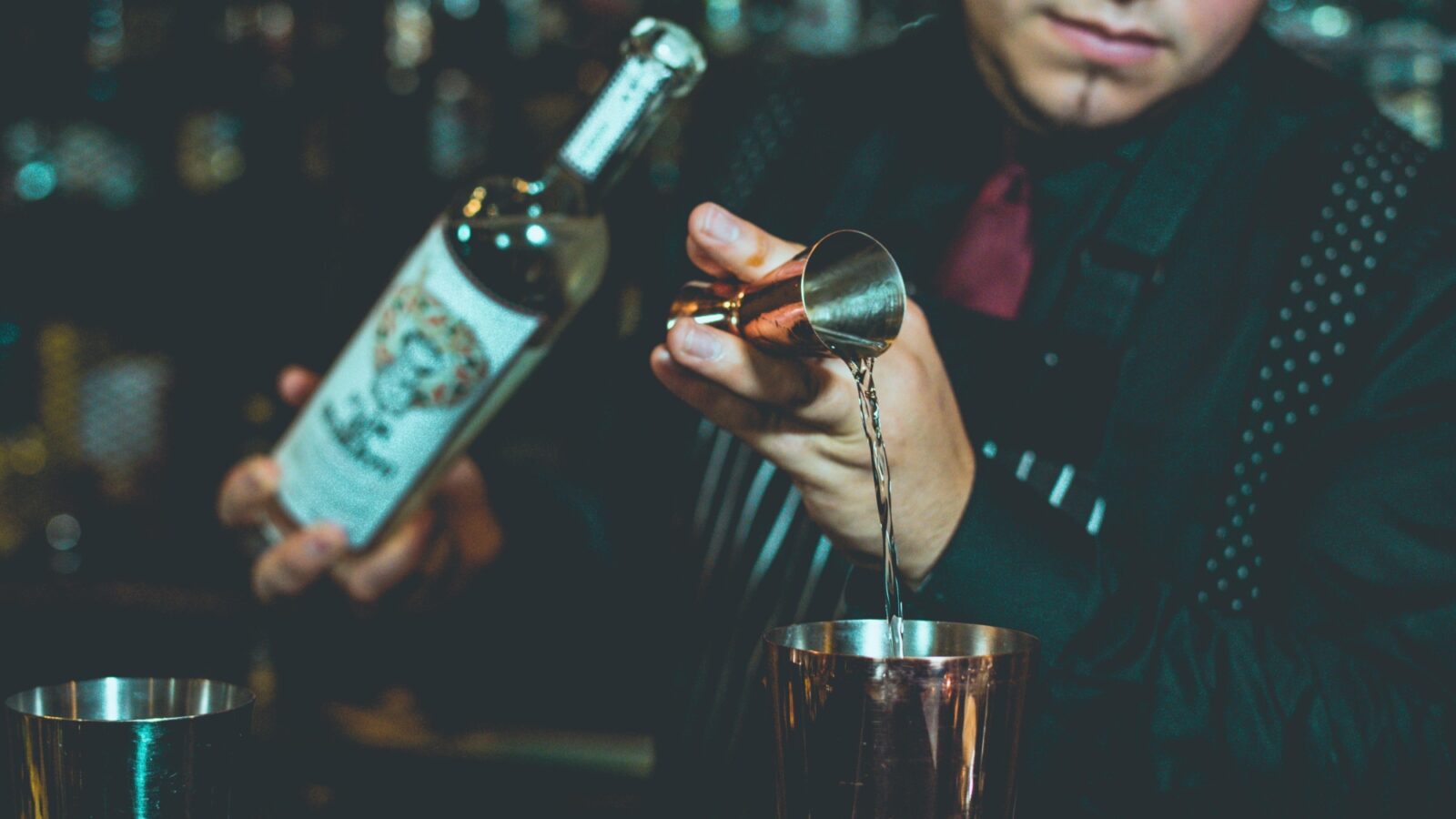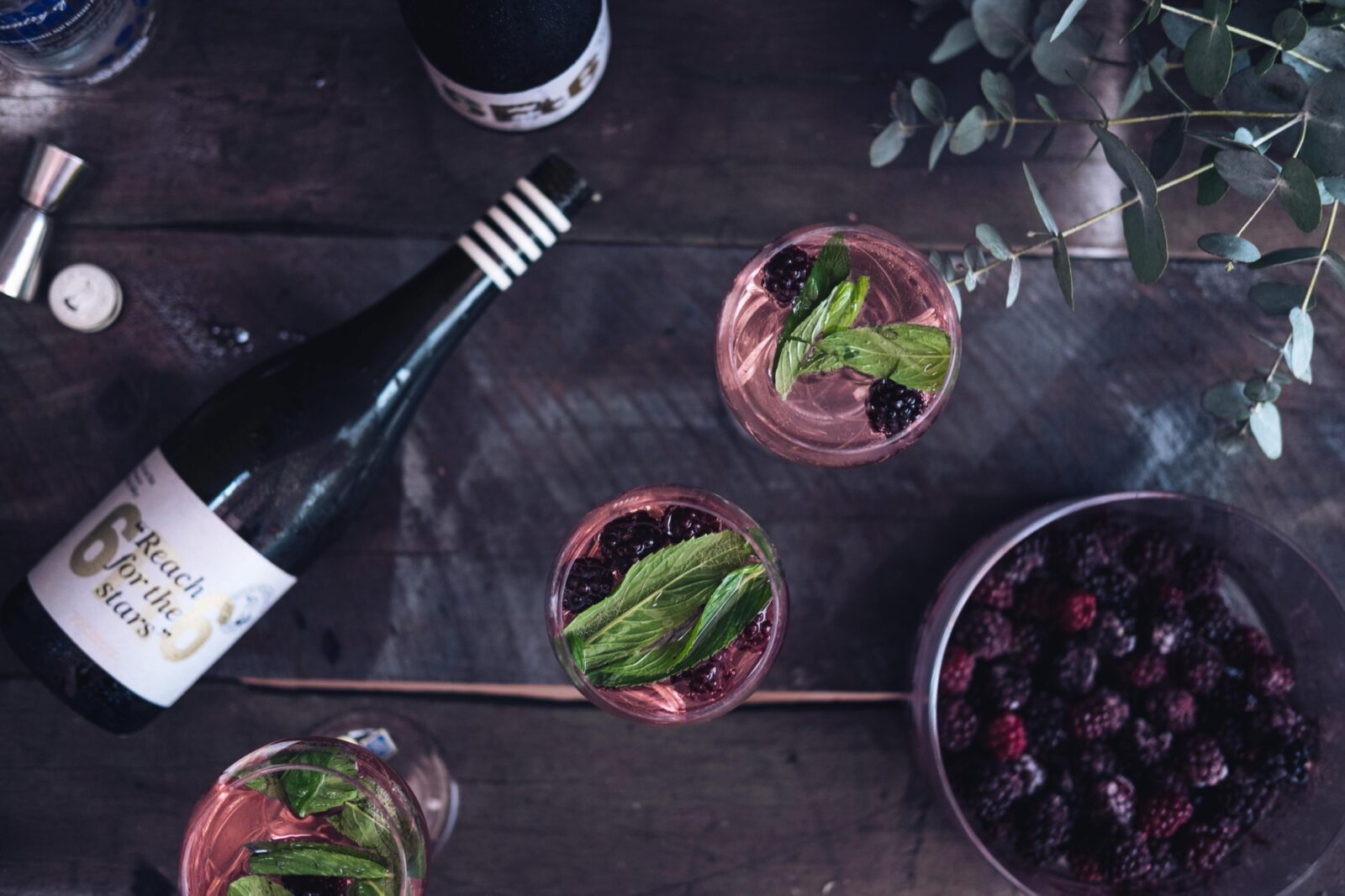
How to Launch Perfect Food & Wine Pairings at Your Restaurant
Beer, wine, and cocktails can go perfectly with some menu items. Here's how to make the best food and drink pairings for your restaurant guests.

Kyle ThackerAuthor
It’s important for restaurant operators to consider the full dining experience their restaurant offers. Perhaps guests come to your restaurant for delicious meals or signature drinks, but have you thought about those who come for both? It may seem like a minor detail, but pairing drinks with your food can be an enormous plus for your restaurant.
Creating a remarkable beer or wine pairings can elevate a dish to new heights. Pairing drinks with dishes gives guests an opportunity to try something new and bask in the sublime moment of a perfect food and drink combination. It's an effective way to give your restaurant the unique perception you've been wanting your guests to have about you.
Menu Engineering Course
Take this course to make the most of your menu. Learn about menu psychology and design, managing your menu online, and adapting your menu to increase sales.

A Primer on Pairing Food and Drink
Some say that rules are meant to be broken, but it’s best to understand the rules and work within them before you go ahead and toss the rulebook into the winepress. When pairing food and wine or training your staff to pair, there are a few good things to keep in mind.
Consider the Five Basic Flavors
When pairing food with wine or beer, it’s important to remember your basic flavors: Sweet, salty, sour, bitter, and savory. When you’re considering beverage pairings, start by assigning these flavor profiles to your food. Think about what components in the dish create these flavors and how your wine or beer will relate to those components. Work backwards from food to drink.
Watch your Weight
In addition to flavor, note how heavy or light your food is. The weight (body), of your drink should match the weight of your dish. A common rule is to pair light dishes with lighter wines, heavy dishes with heavier wines. You don’t want a heavy dish to overpower a light wine, or vice versa.
Compliment or Contrast?
Do you want your pairing to share flavors and blend together for a cohesive experience? Or, do you want contrasting flavors that will give balance? Generally, it’s best practice to compliment subtle flavors, while contrasting a bold and powerful dish with a drink to balance it.

Now that you have a basic idea of how to start pairing drinks with food, here are three tips on how to launch custom beer or wine pairings at your restaurant.
1. Training Staff to Pair Beverages
A vital step to launch a custom beer or wine pairing program at your restaurant is to make sure your staff is well trained.
Your servers, bartenders, and floor managers must be able to suggest solid beverage pairings with whatever a guest orders. A committed training program is key to staffing your restaurant with de facto sommeliers.
- Tips for Training: Give wine and beer resources to staff and new hires. Quiz them on these materials. It’s not just knowing which wines on your list go best with which dishes, it’s why those items pair well together that is important.
- Wine & Beer Menu Tasting Notes: Provide notes and pairing suggestions for every wine or beer on your menu. These can be house notes put together by you, notes from producers, or, if you use digital wine and beer menus, you can use these as a way to train staff on your selection.
- Staff Incentives: These motivate your staff to sell wine or beer that will create the perfect experience you want to give your guests. Your servers are your biggest promoters, so incentivizing them to sell more is always worth it. Say you’re launching a regionally-focused wine pairing program, and your special for the night is a Spanish-style seafood paella that should be pair with a nice bottle of albariño from coastal Galicia. Run an incentive where the server who sells the most of these combos wins a bottle of that albariño, or a gift certificate that is equivalent the a percentage total of their sales for the night. They will sell more of those pairings if incentivized.
2. Tasting Menus With Beer Pairings
Tasting menus are a great way to utilize beverage pairings for your guests. On their own, tasting menus are delightful. The prix fixe style meals are sequenced in a way that relieves pressure from servers and the kitchen and offers guests a menu of a restaurant’s strongest dishes and beverage pairings, amounting to a digestible “Best Of…” album for the restaurant. It’s nothing but the hits.
Tasting menus traditionally offer wine pairings with the courses, but let’s look at beer pairings instead. Craft brewers have launched beer into a pedigreed status where a beer’s flavor profile can be as complex and nuanced as any wine you’ll come across. Beer’s new role as a culinary compliment was fully recognized when a Michelin star was awarded to Luksus, a New York City restaurant that does not serve wine. Instead, the restaurant runs a nightly tasting menu with optional beer pairings.
How to Build a Tasting Menu with Beer
Beer pairings do pose different concerns than wine pairings. For example, beer is heavier than wine. You don’t want to overwhelm guests with heavy beers that are too filling, so think about how your menu progresses and which beers will follow a steady pace.
- White or Wit beers are great to pair with lighter dishes like fish, or fish tacos; salads with citrus based dressing also make for a lovely pairing with these styles.
- Lager beers are good for spicy foods, seafood, and light proteins. A lager won’t overpower the dish, they pair well with citrus, and a good lager will act as a pleasant palate cleanser between courses.
- Amber ales are well-rounded beers with flavors of baked goods and toasted malt that can really carry flavors in food. Think of it has a starchy-sweet companion to your food, like a side of sweet potatoes.
- Pale ales are the more aggressively flavored of these beers and are a nice nod to craft drinkers who look for bold flavors. These beers usually have a malt-heavy build that is balanced with hop bitterness. Avoid overly spicy foods with pales, but most dishes would work well here.
- IPAs may be the craft beer icon, but really bitter IPAs are difficult to pair food with. This is the difference between a good beer list and a good beer pairing: if you’re launching a custom beer pairing, you want pleasant combinations, not extreme flavors. Opt for IPAs that are more citrus-based like fruited or citra-hopped styles, or mild, English-style IPAs.
- Stouts and Porters are great options to pair with grilled red meats, hearty sauces, and moderate spice. The big roasty malt backbones for these styles plays really well with grilled and smoked meats. Mild curries and Indian food that has more sweetness than spice work really well with these beers.
3. Regional Wine Pairings
A growing wine trend in restaurants is to build regionally-focused wine lists that highlight the different styles and nuances offered from a single country or wine region. It’s an exciting way for wine-lovers to dive into subtleties and explore a region with a cartographer’s sense for detail.
Regional focus is great way to pair wines, too. An old adage goes, “what grows together, goes together.” And since the phrase rhymes and rings with folksy charm, then you know it’s true.
Launch custom wine pairings by matching a specific cuisine with wine from the same area. This is a great way to pair wines and food because it makes so much sense, that when your server pitches the idea to a table, it’s really hard to say no.
Wine and foods of the same region have been enjoyed together naturally for years on end. In the world of food and drink, so trends are really just reanimations of traditional preparations, techniques, and flavor combinations. It’s like discovering a dead language and finding it’s words feel native on your tongue. This is the experience of enjoying regional-specific dishes with corresponding wines; it makes the obvious seem inventive.
Finding the Perfect Match
Making a truly unique food and drink pairing at your restaurant can be the factor that sets you apart from the place down the street. Remember that your guests come to your restaurant for may reasons - from the food, to the drinks, to the atmosphere, to the friendly staff. Creating a perfect match of food and drink and training your staff to know these recommendations inside and out lets customers know you value quality, taste, and a love of food at your restaurant.
What are your favorite food and drink pairings? Let us know in the comments below!
Is this article helpful?
DISCLAIMER: This information is provided for general informational purposes only, and publication does not constitute an endorsement. Toast does not warrant the accuracy or completeness of any information, text, graphics, links, or other items contained within this content. Toast does not guarantee you will achieve any specific results if you follow any advice herein. It may be advisable for you to consult with a professional such as a lawyer, accountant, or business advisor for advice specific to your situation.
Read More
Subscribe to On the Line
Sign up to get industry intel, advice, tools, and honest takes from real people tackling their restaurants’ greatest challenges.


